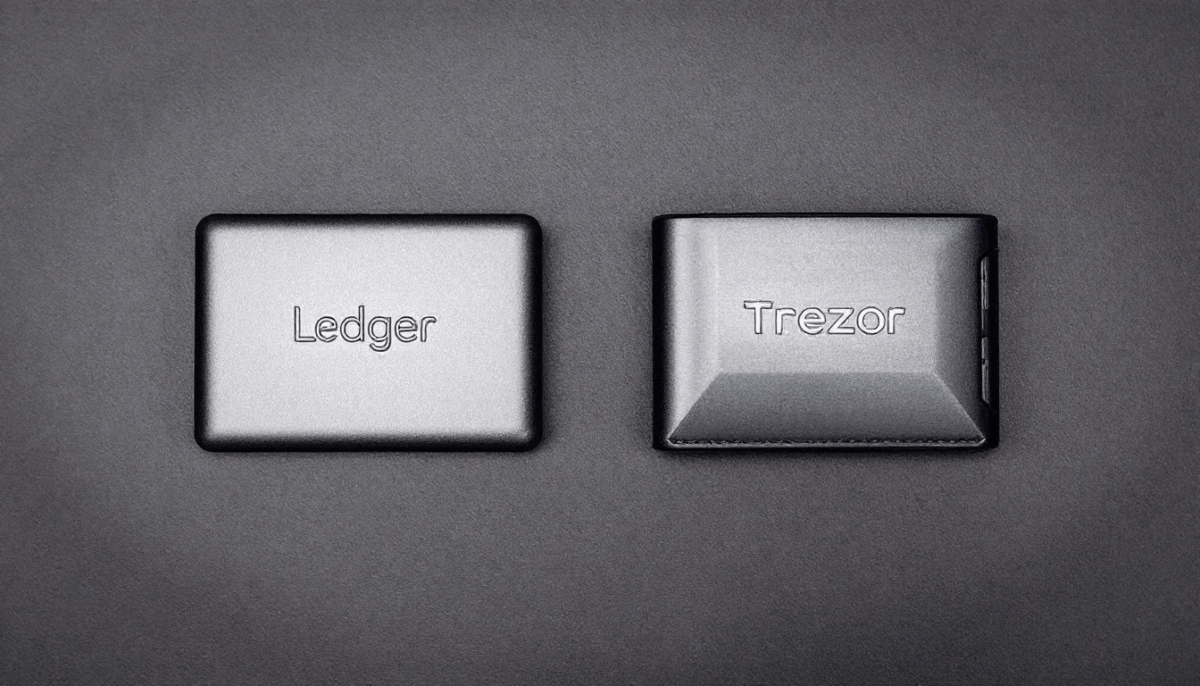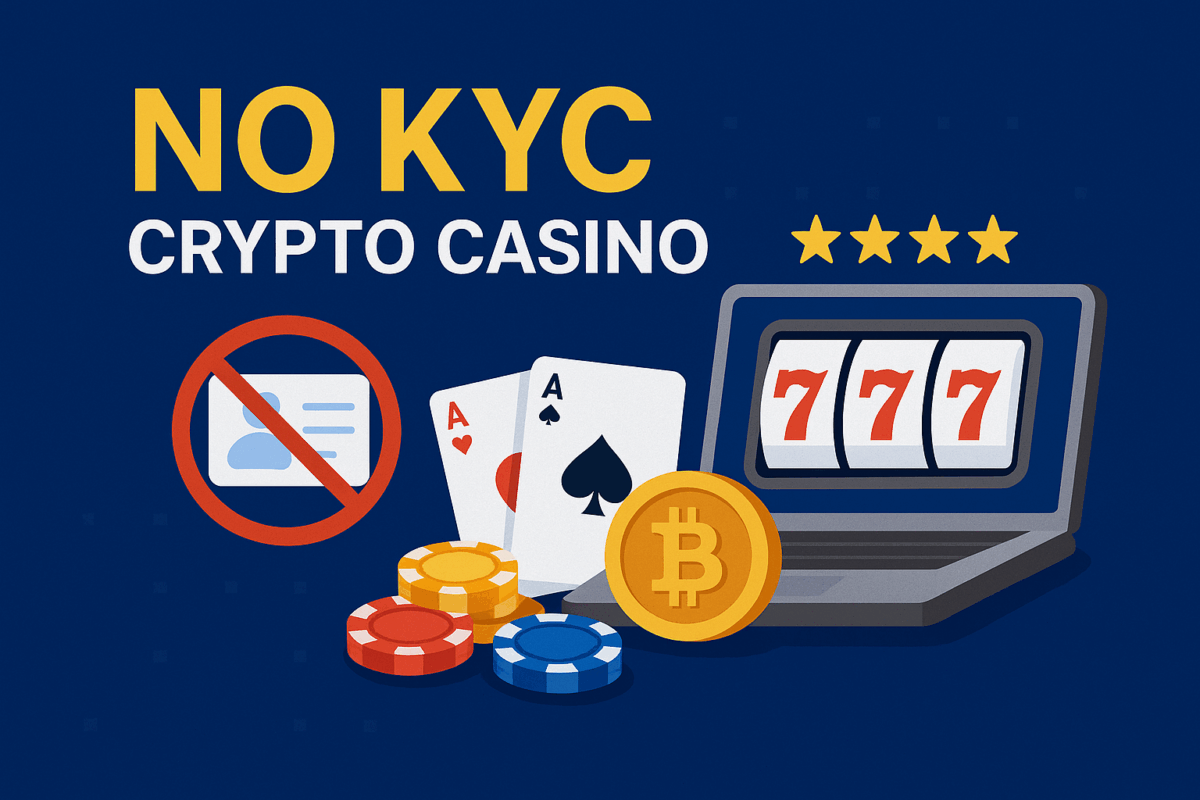Wallet security is a top priority for both casual users and serious investors in the cryptocurrency space in 2025. Choosing a reliable wallet can help you avoid scams, theft, and loss of funds. In this guide, we explore the best hot and cold crypto wallets for 2025, including their unique features, pros, cons, and how to pick the right one for your needs.
Whether you’re storing Bitcoin, Ethereum, NFTs, or DeFi tokens, you’ll find the ideal crypto wallet solutions for safe, fast, and versatile usage.
Best Crypto Wallets 2025
Wallet Name | Type | Best For | Key Features | Rating | Visit Link |
|---|---|---|---|---|---|
BestWallet | Hot (Mobile/Web) | DeFi, NFTs, multi-chain users | DEX aggregator, IDO access, multi-chain support | ⭐⭐⭐⭐⭐ (9.5/10) | |
Ledger Nano X | Cold (Hardware) | Long-term HODL, secure storage | Bluetooth, staking, supports 5,500+ coins | ⭐⭐⭐⭐☆ (9.0/10) | |
Trezor Model T | Cold (Hardware) | High-value users, transparency | Open-source, touchscreen, Shamir backup | ⭐⭐⭐⭐☆ (8.8/10) | |
MetaMask | Hot (Browser/App) | DeFi, Web3, NFTs | Browser/mobile app, DeFi & Web3 support | ⭐⭐⭐⭐☆ (8.5/10) | |
Trust Wallet | Hot (Mobile) | Mobile DeFi and staking users | Supports multiple chains, staking, NFT support | ⭐⭐⭐⭐ (8.0/10) | |
SafePal S1 | Cold (Hardware) | Budget-friendly cold storage | Air-gapped, DeFi-ready, multi-coin support | ⭐⭐⭐⭐ (8.0/10) | |
Exodus Wallet | Hot (Desktop/Mobile) | Beginners, portfolio tracking | Built-in swap, staking, portfolio tracker | ⭐⭐⭐☆ (7.5/10) |
BestWallet

BestWallet is emerging as the go-to all-in-one crypto wallet in 2025. It offers the convenience of a single wallet, allowing users to manage multiple cryptocurrencies efficiently from one unified interface. Designed as a non-custodial, multi-chain, DeFi-ready wallet, BestWallet allows users to store, swap, and manage cryptocurrencies, NFTs, and DeFi tokens securely — all while keeping full control of their private keys.
BestWallet is more than just a wallet — it’s an entire DeFi, NFT, and Web3 ecosystem in your pocket. Built for power users and beginners alike, it supports multiple EVM chains, features an in-app DEX aggregator, NFT storage, and even allows participation in IDOs through its launchpad.
What makes BestWallet stand out is its built-in DEX aggregator, launchpad access, and seamless Web3 compatibility, giving users a fully decentralized experience without compromising on ease of use.
Key Features:
- Supports multiple EVM-compatible blockchains
- Non-custodial & self-custody — users own their keys
- Built-in DEX aggregator for best swap rates
- Access to IDO/launchpads & early-stage projects
- Supports NFT storage & interaction with DeFi protocols
- Available on iOS, Android, and Web extension
Best For:
- DeFi users and NFT collectors
- Users looking for a multi-chain Web3 wallet
- Privacy-conscious users who prefer self-custody
However, it currently, supports only EVM-compatible chains (non-EVM support under development) Relatively newer player compared to Ledger or Trezor.
Ledger Nano X
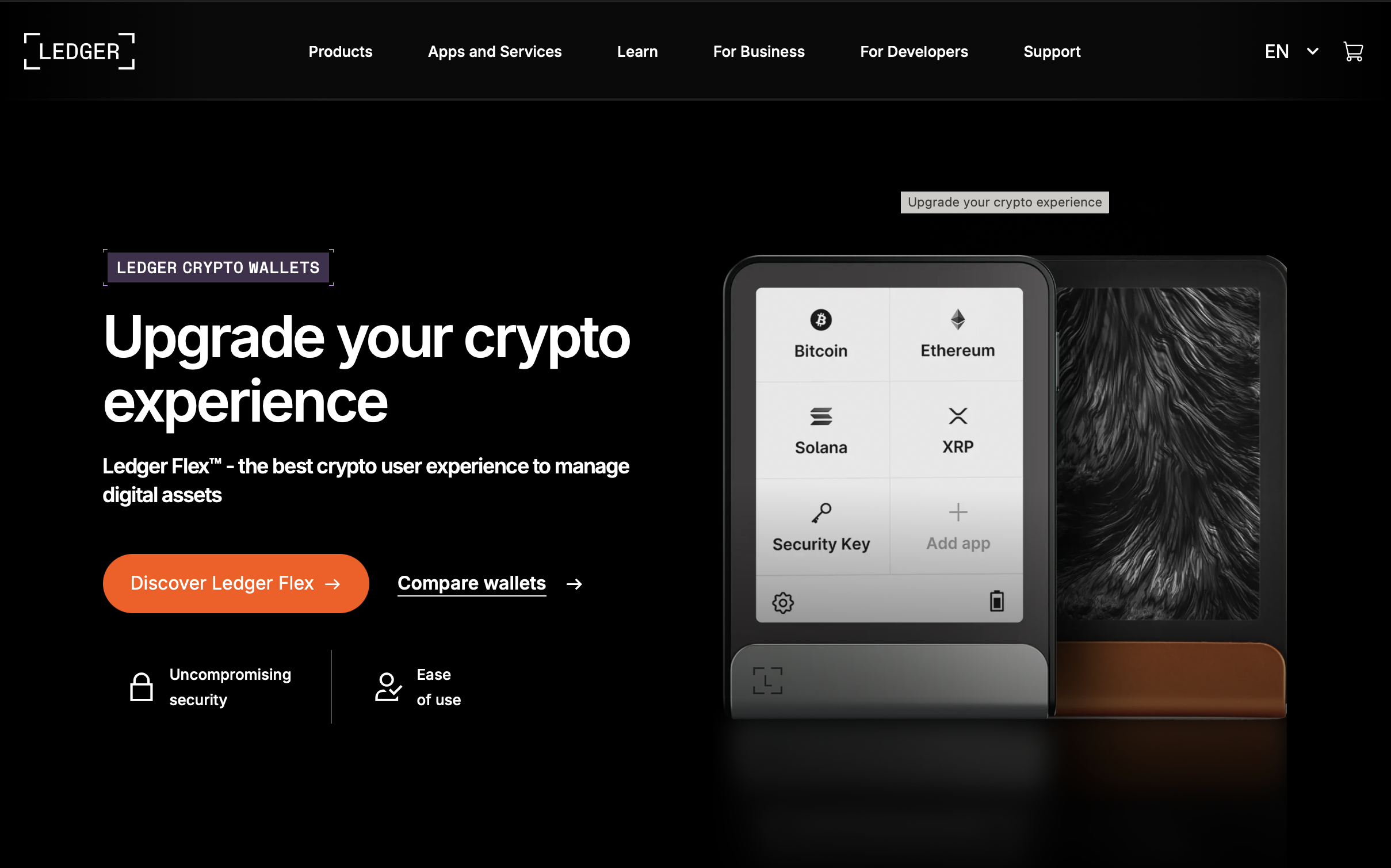
Ledger hardware wallets remain the top choice for cold storage thanks to their Secure Element chip and Bluetooth support, allowing safe mobile management.
Strengths:
- Best-in-class security (CC EAL5+ chip)
- Supports 5,500+ cryptos
- Works with Ledger Live app for staking and DeFi
Weaknesses:
- Requires device to access funds
- Expensive for casual users
Trezor Model T
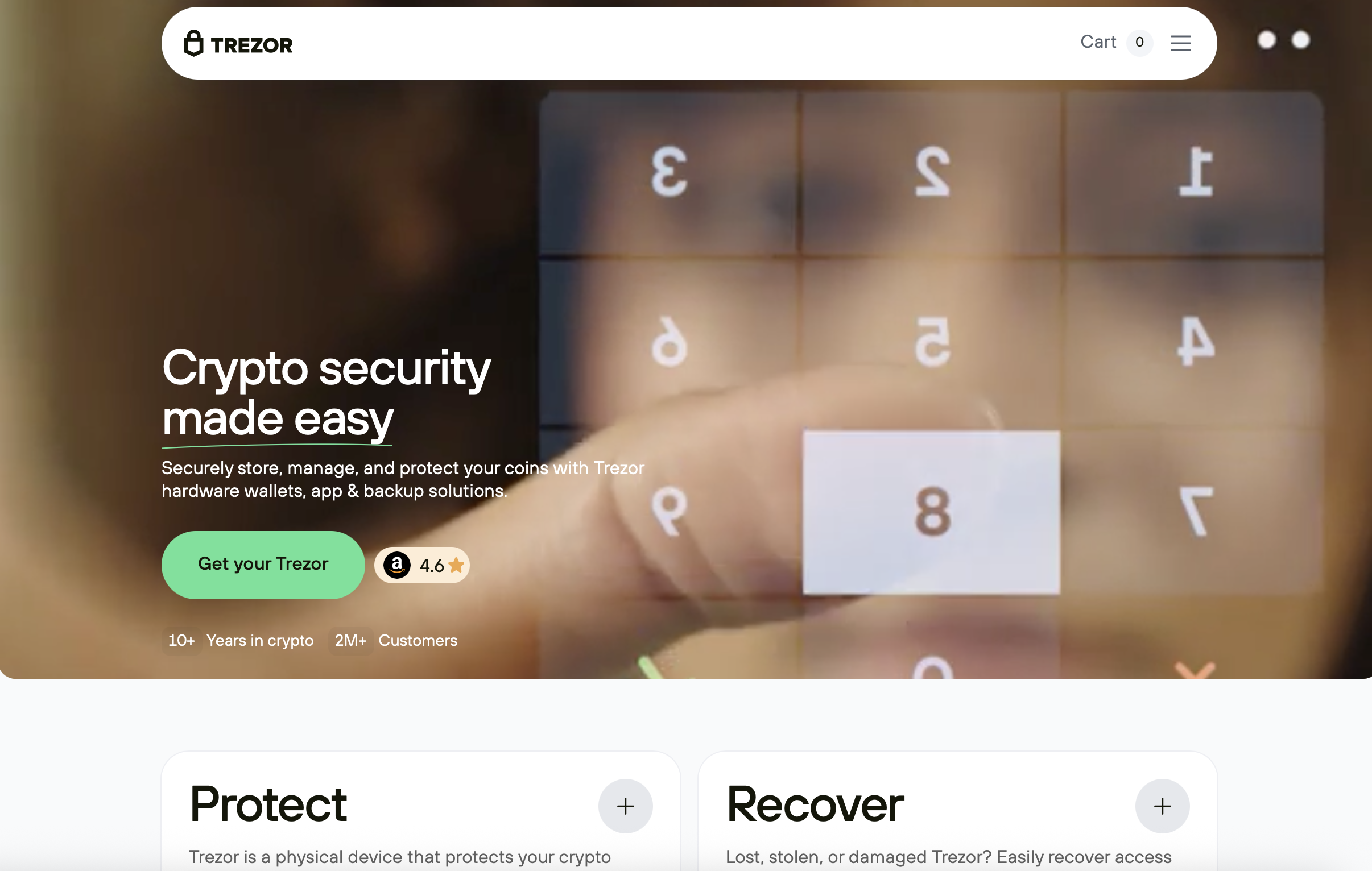
Trezor wallets emphasize transparency and user control, with open-source software, a touchscreen interface, and Shamir backup.
Strengths:
- Fully open-source firmware
- Supports 1,200+ coins
- Touchscreen simplifies usage
Weaknesses:
- No Bluetooth (USB only)
- High cost
MetaMask

The default gateway to DeFi and NFTs, MetaMask is the most popular browser extension and wallet in crypto.
Strengths:
- Easy integration with dApps
- Supports custom EVM chains
- Works with Ledger/Trezor for added security
Weaknesses:
- Hot wallet risks (phishing, hacks)
- Not ideal for beginners without DeFi experience
Trust Wallet

Binance-backed Trust Wallet is the mobile king for DeFi, staking, and NFT support, and enables users to store, send, and receive a variety of digital assets securely.
Strengths:
- Supports 60+ blockchains
- Staking available in-app
- NFT support (ERC-721, BEP-721)
Weaknesses:
- Hot wallet vulnerabilities
- Limited desktop integration
SafePal S1

SafePal S1 offers affordable crypto offline air-gapped cold storage, supporting thousands of coins.
Strengths:
- Air-gapped (QR code communication)
- Supports DeFi via SafePal app
- Affordable for hardware wallet beginners
Weaknesses:
- UI less polished than Ledger or Trezor
- Requires physical device for each action
Exodus Wallet
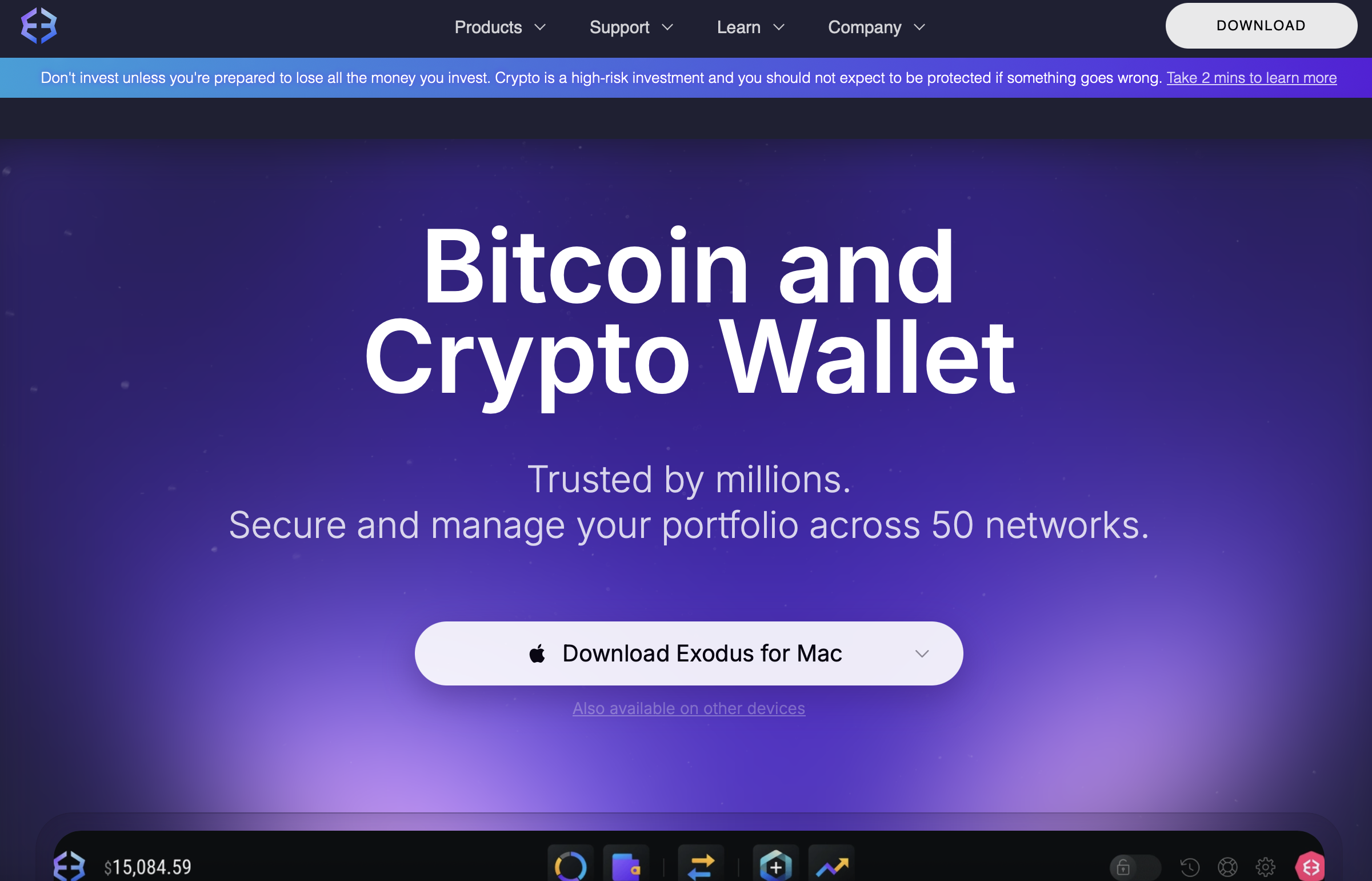
Perfect for beginners, Exodus offers a user friendly interface with a visually appealing design and built-in swap and staking features.
Strengths:
- Easy to use
- Portfolio tracker included
- Supports DeFi staking
Weaknesses:
- Closed-source software
- Hot wallet risks
What Are Cryptocurrency Wallets?
A cryptocurrency wallet, also known as a crypto wallet, is a software program that allows users to securely store, send, and receive digital assets, such as cryptocurrencies and NFTs. With the rise of cryptocurrency, the demand for reliable and secure crypto wallets has increased. In this article, we will explore the world of cryptocurrency wallets, including the different types of wallets, their key features, and how to choose the best crypto wallet for your needs. Whether you’re a beginner or an experienced crypto user, understanding the basics of cryptocurrency wallets is essential for securely managing your crypto assets.
Cryptocurrency wallets come in various forms, including hardware wallets, software wallets, and online wallets. Each type offers unique features and levels of security. Hardware wallets, like Ledger Nano and Trezor, are physical devices that store your private keys offline, providing robust security against online threats. Software wallets, such as Trust Wallet and Coinbase Wallet, are applications that can be installed on your mobile phone or desktop computer, offering convenience and ease of use. Online wallets, also known as web wallets, are accessible through a browser and are ideal for quick and easy access to your crypto assets.
Choosing the best crypto wallet depends on your specific needs and preferences. Key features to consider include security measures, ease of use, compatibility with different cryptocurrencies, and additional functionalities like staking and DeFi support. By understanding the different types of cryptocurrency wallets and their key features, you can make an informed decision and securely store your digital assets.
What Are Hot & Cold Crypto Wallets?
Hot Wallets (Software Wallets)
Hot wallets are connected to the internet, making them ideal for active trading, DeFi, NFTs, and daily crypto use. These wallets also allow users to buy, sell, and swap crypto within securely designed platforms. They are easy to use but carry higher security risks since they are exposed online.
Examples: MetaMask, Trust Wallet, BestWallet, Exodus
Common Use Cases:
- Trading & swapping tokens
- Interacting with dApps & NFTs
- Storing small to medium crypto balances for daily use
Cold Wallets (Hardware Wallets)
Cold wallets store your private keys offline, making them nearly immune to online hacks and phishing attacks. They are ideal for long-term investors and storing large crypto holdings.
Examples: Ledger Nano X, Trezor Model T, SafePal S1
Common Use Cases:
- Long-term storage of large amounts
- Protection against hacks, malware, and online vulnerabilities
- Backup for HODLers
Key Differences Between Hot and Cold Wallets
Feature | Hot Wallet | Cold Wallet |
|---|---|---|
Internet Access | Always connected | Offline, air-gapped |
Accessibility | Instant, anywhere | Requires physical device |
Security Level | Medium (risk of hacks/phishing) | High (offline security) |
Best Use | Trading, DeFi, NFTs, daily use | Long-term storage, high-value |
User Control | User controls keys (non-custodial wallets) | User controls keys (hardware storage) |
Examples | BestWallet, MetaMask, Trust Wallet | Ledger, Trezor, SafePal S1 |
To summarize, here are the key takeaways: hot wallets offer convenience and accessibility for daily use, while cold wallets provide superior security for long-term storage.
Choosing a Secure Wallet
Choosing a secure wallet is crucial for protecting your digital assets from hackers and other malicious actors. When selecting a crypto wallet, consider the level of security it provides, such as encryption, two-factor authentication, and private key management. A non-custodial wallet, like a hardware wallet or a software wallet with hardware wallet support, is generally considered more secure than a custodial wallet, as it gives you full control over your private keys. Look for wallets that have a strong reputation, positive user reviews, and a track record of security. Some popular hardware wallets include Ledger and Trezor, while software wallets like Coinbase Wallet and Trust Wallet offer robust security features.
Security should be your top priority when choosing a crypto wallet. Hardware wallets, such as Ledger Nano and Trezor, are known for their high level of security, as they store your private keys offline and are immune to online hacks. These wallets often come with additional security features like secure recovery phrases and multi-party computation. Software wallets, like Trust Wallet and Coinbase Wallet, also offer strong security measures, including encryption and two-factor authentication, to protect your funds.
When evaluating a wallet’s security, consider its reputation and user reviews. A wallet with a strong track record of security and positive feedback from users is more likely to be reliable. Additionally, ensure that the wallet supports the cryptocurrencies you plan to store and offers features that enhance security, such as hardware wallet support and secure recovery phrases. By choosing a secure wallet, you can confidently manage your digital assets and protect them from potential threats.
Wallet Security
Wallet security is a top priority when it comes to cryptocurrency wallets. A secure wallet should have robust security measures in place, such as encryption, secure recovery phrases, and two-factor authentication. Hardware wallets, like Ledger Nano, offer an additional layer of security by storing your private keys offline, making it more difficult for hackers to access your funds. Software wallets, on the other hand, can be vulnerable to hacking if not properly secured. To enhance security, consider using a non-custodial wallet, enabling two-factor authentication, and keeping your software up to date. Additionally, be cautious when using online wallets or centralized exchanges, as they can be more susceptible to hacking.
Hardware wallets, such as Ledger Nano and Trezor, are considered the gold standard for wallet security. These devices store your private keys offline, away from potential online threats. They also come with secure recovery phrases, which allow you to recover your funds if the device is lost or damaged. Software wallets, like Trust Wallet and Coinbase Wallet, offer strong security features, but it’s essential to follow best practices to protect your funds. Enable two-factor authentication, use strong passwords, and keep your software up to date to minimize the risk of hacking.
When using online wallets or centralized exchanges, be aware of the potential security risks. These platforms are more vulnerable to hacking and may not offer the same level of security as hardware or software wallets. To enhance security, consider using a non-custodial wallet, which gives you full control over your private keys and funds. By following these security practices, you can protect your digital assets and reduce the risk of unauthorized access.
Custodial vs Non-Custodial Wallets
Custodial wallets, like those offered by centralized exchanges, hold your private keys and control your funds. Non-custodial wallets, on the other hand, give you full control over your private keys and funds. Non-custodial wallets, like hardware wallets or software wallets with hardware wallet support, are generally considered more secure, as you have full control over your assets. However, they can be more complex to use and require a higher level of technical expertise. Custodial wallets, while convenient, can be more vulnerable to hacking and may not offer the same level of security as non-custodial wallets. When choosing between a custodial and non-custodial wallet, consider your level of technical expertise, security needs, and the type of assets you want to store.
Non-custodial wallets, such as Ledger Nano and Trezor, are ideal for users who prioritize security and control. These wallets store your private keys offline and provide robust security features, making them less susceptible to hacking. Software wallets, like Trust Wallet and Coinbase Wallet, also offer non-custodial options, allowing you to manage your private keys and funds securely. However, non-custodial wallets require a higher level of technical expertise and responsibility, as you are solely responsible for managing your private keys and recovery phrases.
Custodial wallets, offered by centralized exchanges like Binance and Coinbase, provide convenience and ease of use. These wallets manage your private keys and funds, making them ideal for beginners or users who prefer a more hands-off approach. However, custodial wallets are more vulnerable to hacking and may not offer the same level of security as non-custodial wallets. When choosing a wallet, consider your security needs, technical expertise, and the type of assets you want to store. By understanding the differences between custodial and non-custodial wallets, you can make an informed decision and choose the right wallet for your needs.
Conclusion
In conclusion, choosing the right cryptocurrency wallet is essential for securely managing your digital assets. Consider the level of security, ease of use, and type of assets you want to store when selecting a wallet. Non-custodial wallets, like hardware wallets or software wallets with hardware wallet support, offer robust security features and give you full control over your private keys. Remember to always prioritize security, enable two-factor authentication, and keep your software up to date to protect your funds. With the right wallet and security practices in place, you can confidently store, send, and receive digital assets, and take advantage of the benefits of cryptocurrency. Whether you’re a beginner or an experienced crypto user, a reliable and secure crypto wallet is essential for navigating the world of cryptocurrency.
By understanding the different types of cryptocurrency wallets and their key features, you can make an informed decision and choose the best crypto wallet for your needs. Prioritize security, stay informed about the latest developments in crypto wallets, and follow best practices to protect your digital assets. With the right wallet and security measures in place, you can confidently manage your crypto portfolio and enjoy the benefits of the growing cryptocurrency market.
Frequently Asked Questions (FAQs)
What is the most secure wallet in 2025?
For cold storage, Ledger Nano X and Trezor Model T are the most secure. For DeFi and daily use, BestWallet offers a secure, non-custodial, multi-chain hot wallet.
Are hot wallets safe?
Hot wallets are secure for daily use but are vulnerable to online threats. For higher amounts, use a cold wallet.
Should I use both hot and cold wallets?
Yes. Many experienced users store most of their crypto in a cold wallet and keep smaller amounts in a hot wallet for trading and DeFi.
What makes BestWallet different in 2025?
BestWallet focuses on being a DeFi and Web3 hub, combining NFT storage, DEX aggregator, IDO access, and self-custody in one app.
Can I store NFTs in these wallets?
Yes, wallets like BestWallet, MetaMask, Trust Wallet, and Exodus all support NFT storage.


